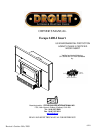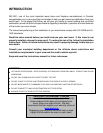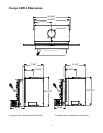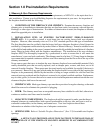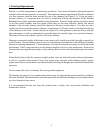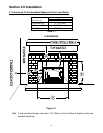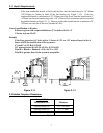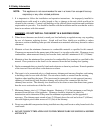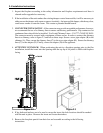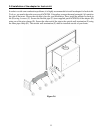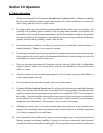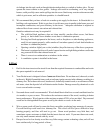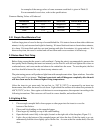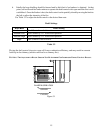
5
1.2 Venting Requirements
The flue is a critical component to a satisfactory installation. Your insert will attain its best performance if
installed with a flue that generates its own draft. The minimum venting requirement will be the installation
of a flue connector from the insert into the first tile of the chimney (see Figure 2.3). If you are using a
masonry chimney, it is important that it be built in compliance with the specifications of the National
Building Code or other applicable standard having jurisdiction. It must be lined with fire clay bricks, metal
or clay tiles sealed together with fire cement (round flues are the most efficient). Ideally, the interior
diameter of the masonry chimney should be identical to the insert smoke exhaust. You may also run a
stainless steel liner inside the masonry chimney. A continuous 6" (152mm) stainless steel liner from the top
of the chimney to the insert’s smoke exhaust (see Figure 2.2) is the optimum system and will provide the
best performance, as well as compensate for poor draft situations caused by large cross-sectional chimneys.
The insert will not work without a positive seal in the chimney.
Chimneys constructed outside of the home, on an exterior wall, should be avoided if possible, especially in
colder climates. Outside chimneys may not draw as well and may downdraft due to the difficulty in heating
them up to operating temperature. Cooler chimneys will result in increased creosoting, less draft, and poorer
performance. Draft is proportional to overall chimney height as well as to stack temperature. Draft can be
increased by increasing chimney height, and by reducing heat loss from the chimney through an insulated
liner.
Ensure that all joints in the flue systems are tightly sealed, since any leaks will result in reduced performance
as well as a possible safety hazard. Using a fire screen at the extremity of the chimney requires regular
inspection in order to insure that it is not obstructed thus blocking the draught, and it should be cleaned when
necessary.
Do not connect this unit to a chimney flue serving another appliance.
This heating unit must serve as a supplementary heat source. An alternate heat source should be available in
the home if needed. The manufacturer cannot be responsible for additional heating costs associated with the
use of an alternative heat source.
It is recommended that the user buys this product from a retailer who can provide installation and
maintenance advices.



